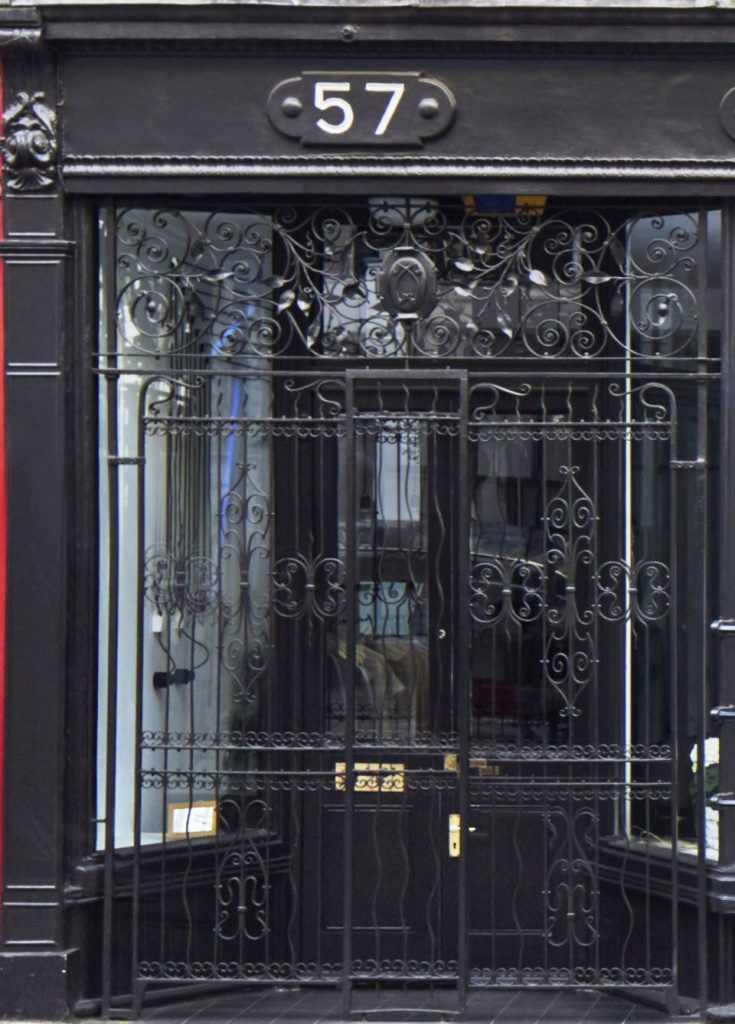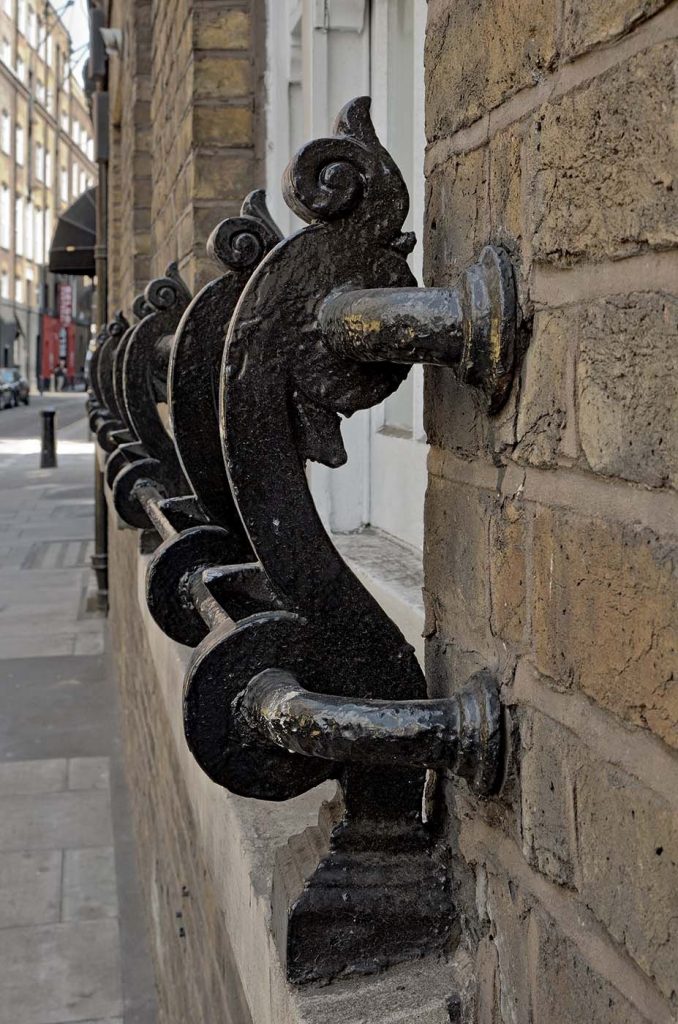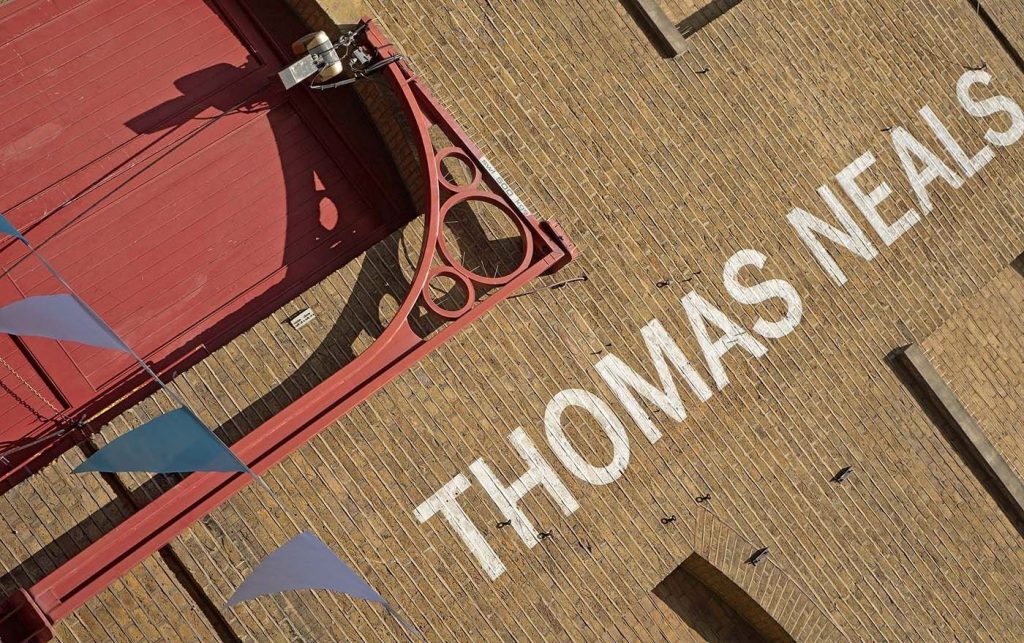External ironwork in the early 18th century was most often painted from a limited variety of available colours, the finer houses perhaps having blue, while the majority would have had blue/grey or stone colour. Green, particularly that resembling patinated bronze, and Venetian red, became popular at the end of the century and remained a favourite for a number of years. Invisible Green was made popular by the landscape gardener Humphrey Repton who recommended it for fencing and railings so that they would blend better with background vegetation. The late 19th century saw the widespread use of a purple-brown colour which gradually gave way to the black which is still the convention today.
More information can be found in the English Heritage (Historic England) leaflet, Ornamental Ironwork: Gates and Railings.


